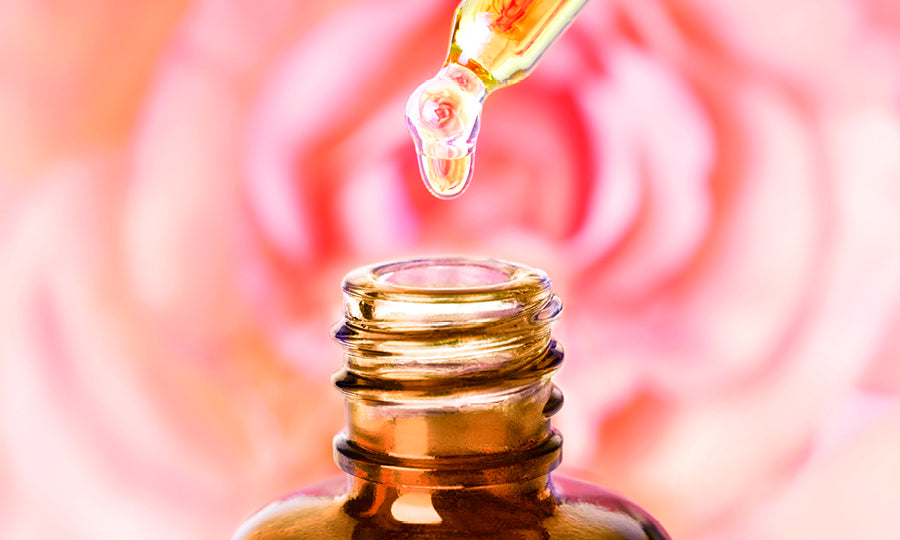Your Cart is Empty
FREE SHIPPING on US orders over $45. Save 25% With Code TAKE25 at checkout.
FREE SHIPPING on US orders over $45. Save 25% With Code TAKE25 at checkout.

It’s no secret that roses are great for your skin. These flowers and the ingredients extracted from them have been used in beauty regimens for hundreds of years due to their undisputed skin benefits.
Rose oil is among the most popular rose-based beauty products. But when you hear the term “rose oil,” do you think of rose oil, or rosehip oil? And what exactly is the difference?
There are actually plenty of differences, but let’s start with...
Rose oil refers to distilled oil from the petal of the botanical Rosa damascena (this is also called rose essential oil). Rosehip oil, on the other hand, refers to oil extracted from the fruit of the wild botanical Rosa canina, Rosa moschata, or Rosa rubiginosa.
Not only are these two oils extracted from different plants, but also from different parts of each plant.
While there are plenty of skin benefits from both of these oils, there’s much more research surrounding rosehip benefits for skin. Rose oil is often used for its sweet scent and calming properties.
But there’s more to rose oil than just a sweet smell. Studies have shown its tendency to ease anxiety and depression in postpartum women and to increase sex drive in both men and women who take SSRIs, which can decrease libido.
Additionally, this study found that hospitalized children reported less postoperative pain after inhaling rose essential oil for aromatherapy.
As for rosehip oil, it has a more earthy and slightly herbaceous scent and is known for its proven anti-inflammatory properties. Additionally, this study found that Rosa canina cold-pressed oil contains tocopherol and carotenoids — two potent antioxidants with anti-aging capabilities.
Rosehip oil also contains high levels of linoleic acid, which protects the skin’s barrier and provides smoothing and balancing properties.
As an essential oil, rose oil should be diluted with water or with a carrier oil (an oil that “carries” a few drops of an essential oil, since most essential oils are too potent for direct contact on the skin). It can also be used in hydrosol form, which is the condensed water naturally produced during essential oil distillation. We recommend using a rose hydrosol mist as a calming toner or natural perfume.
To experience other benefits of roses, add a few drops of rose essential oil to your bath, or use a rose water calming toner for refreshing daytime use.
Rosehip oil can be used as a carrier oil for rose oil or other essential oils. It’s a bit of a heavier oil, and thus great for nighttime use. Plus, it scores low on the comedogenic scale (1 out of 5), meaning it has a very low likelihood of clogging pores. Bonus: it’s also friendly to all skin types!
Another option: use Herbal Dynamics Beauty’s Clean and Calm™ gentle rosehip foaming cleanser to reap rosehip benefits during the day.
|
Rose Essential Oil |
Rosehip Oil |
|
|
Anti-Aging |
✔ |
|
|
Acne fighting |
✔ |
|
|
Calming |
✔ |
|
|
Pain-relieving |
✔ |
|
|
Brightening |
✔ |
|
|
Anti-anxiety |
✔ |
|
|
Aromatherapy |
✔ |
|
|
Anti-inflammatory |
✔ |
|
|
Increased libido |
✔ |